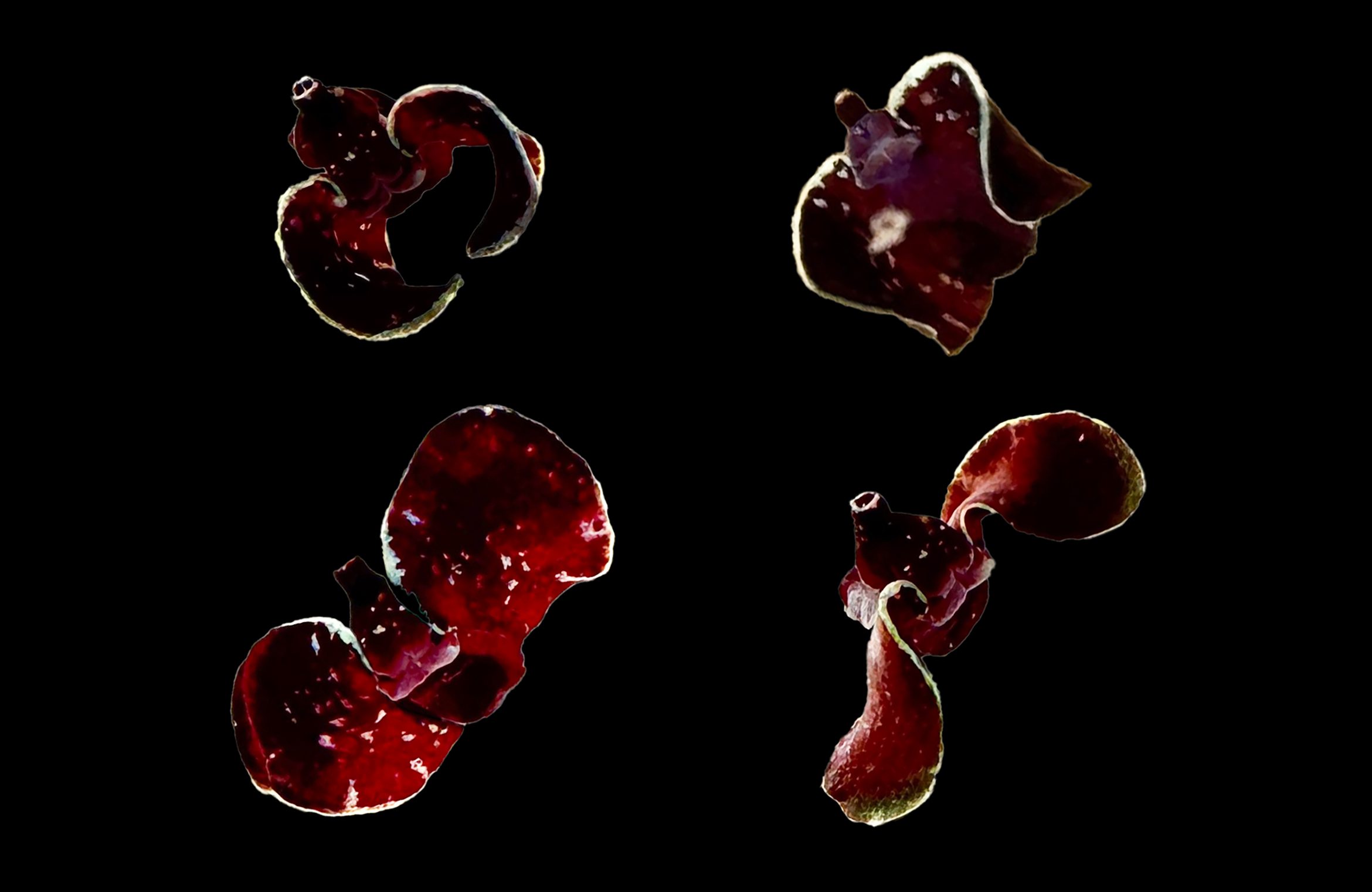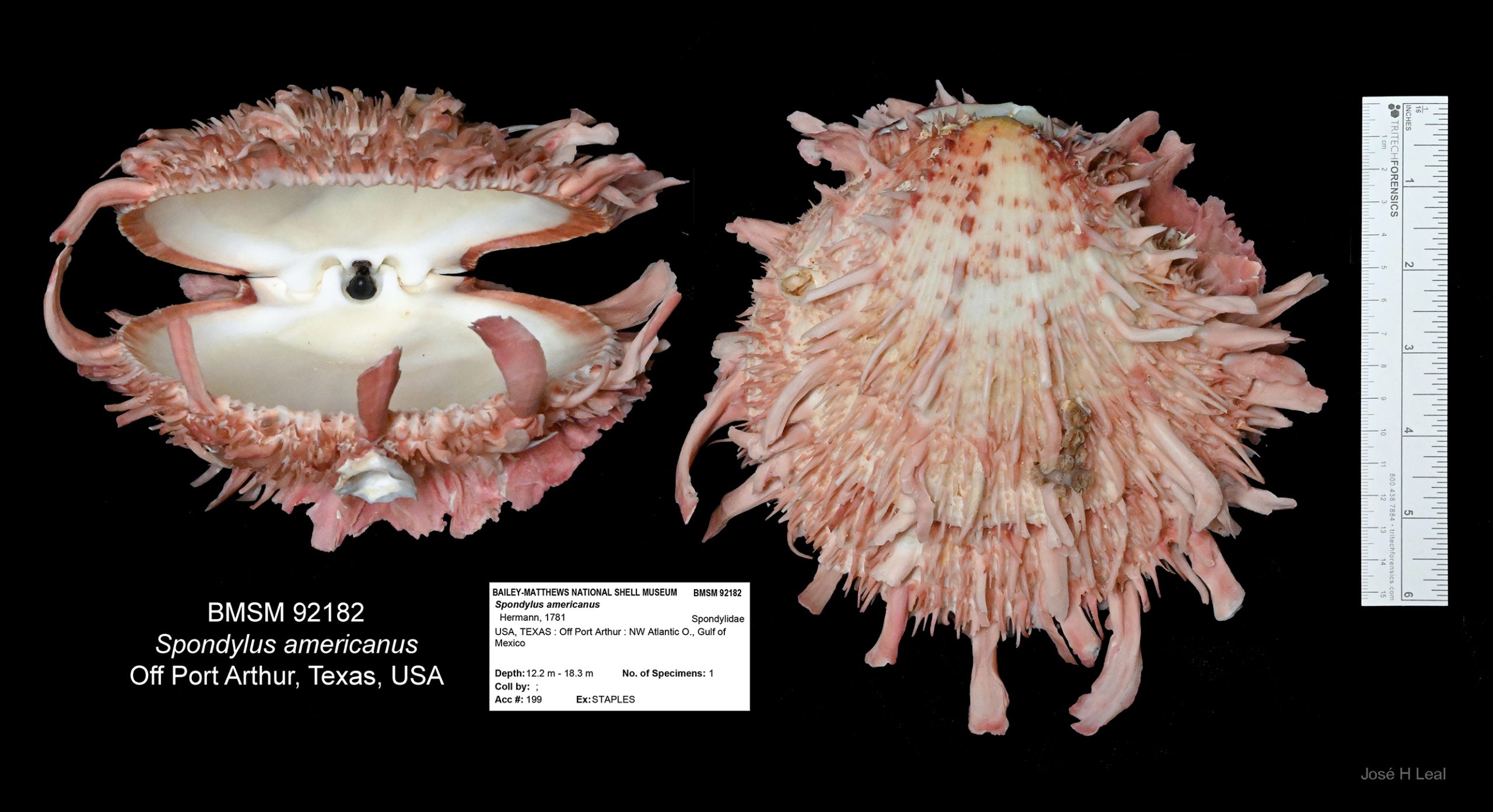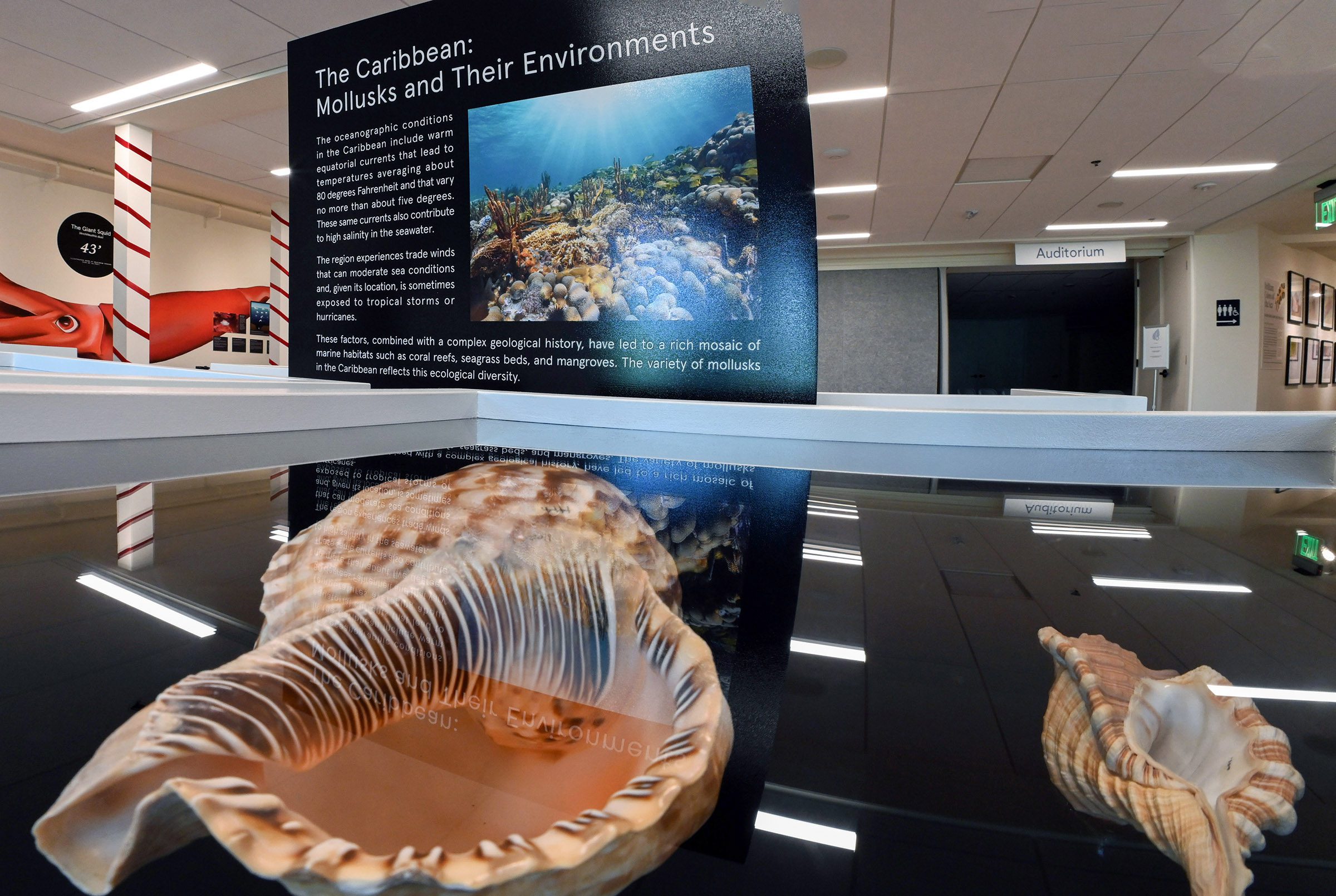Macrocypraea zebra is one of the few species of cowries found in the western Atlantic. Its shell may grow to 133 mm (inches). The species has a very large latitudinal (north to south) distribution, occurring from North Carolina in the USA to Santa Catarina State in Brazil.
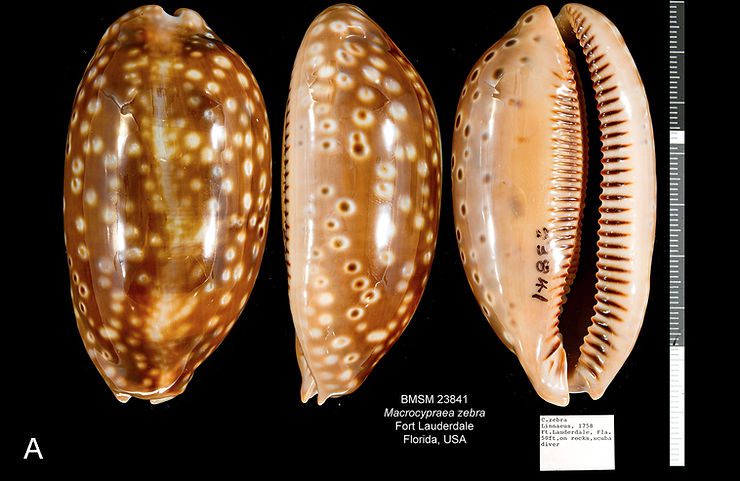 Macrocypraea zebra, from off Fort Lauderdale. Photo: James F. Kelly.
Macrocypraea zebra, from off Fort Lauderdale. Photo: James F. Kelly.
The Measled Cowrie has a distinctive color pattern of white spots superimposed on an underlying pattern of spiral bands. The spiral bands are seen clearly in images B and C (below), which show shells at two different juvenile stages. Image A (above) shows an adult shell with the last, top color layer. (Notice also the differences in base colors among the three shells illustrated.)
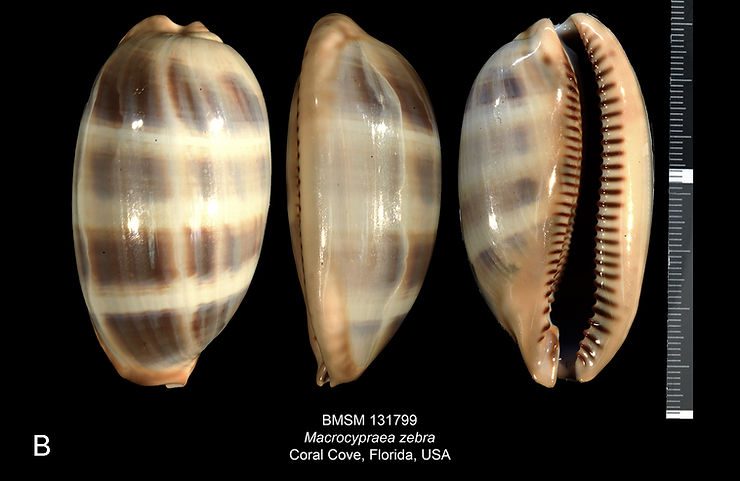 Macrocypraea zebra, from Coral Cove, Florida. Photo: Chris Kovaz.
Macrocypraea zebra, from Coral Cove, Florida. Photo: Chris Kovaz.
In cowries, the mantle (the “skin” flaps responsible for making the shell) can extend over the entire shell surface. After the shell attains final (adult) size, the mantle will add a transparent (lacquer-like) layer adorned with spots or intricate patterns over the existing, opaque base layer. Measled Cowries differ from Deer Cowries (Macrocypraea cervus) by, among other features, the presence of smaller dark spots within the larger white spots alongside the shell (see image A). Those small, darker spots are lacking in Deer Cowries. (All illustrations generated through the Museum’s Digital Imaging Project funded by the Institute of Museum and Library Services.)
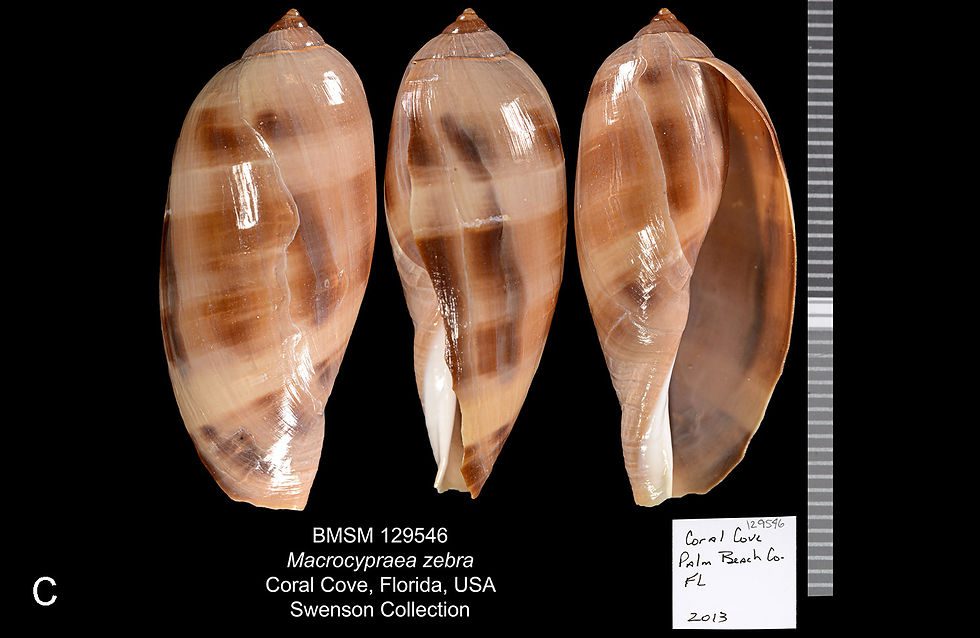 Macrocypraea zebra, from Coral Cove, Florida. Photo: James F. Kelly.
Macrocypraea zebra, from Coral Cove, Florida. Photo: James F. Kelly.
#macrocypraeazebra #measledcowrie #cypraeidae #coralcove #fortlauderdale #deercowrie
